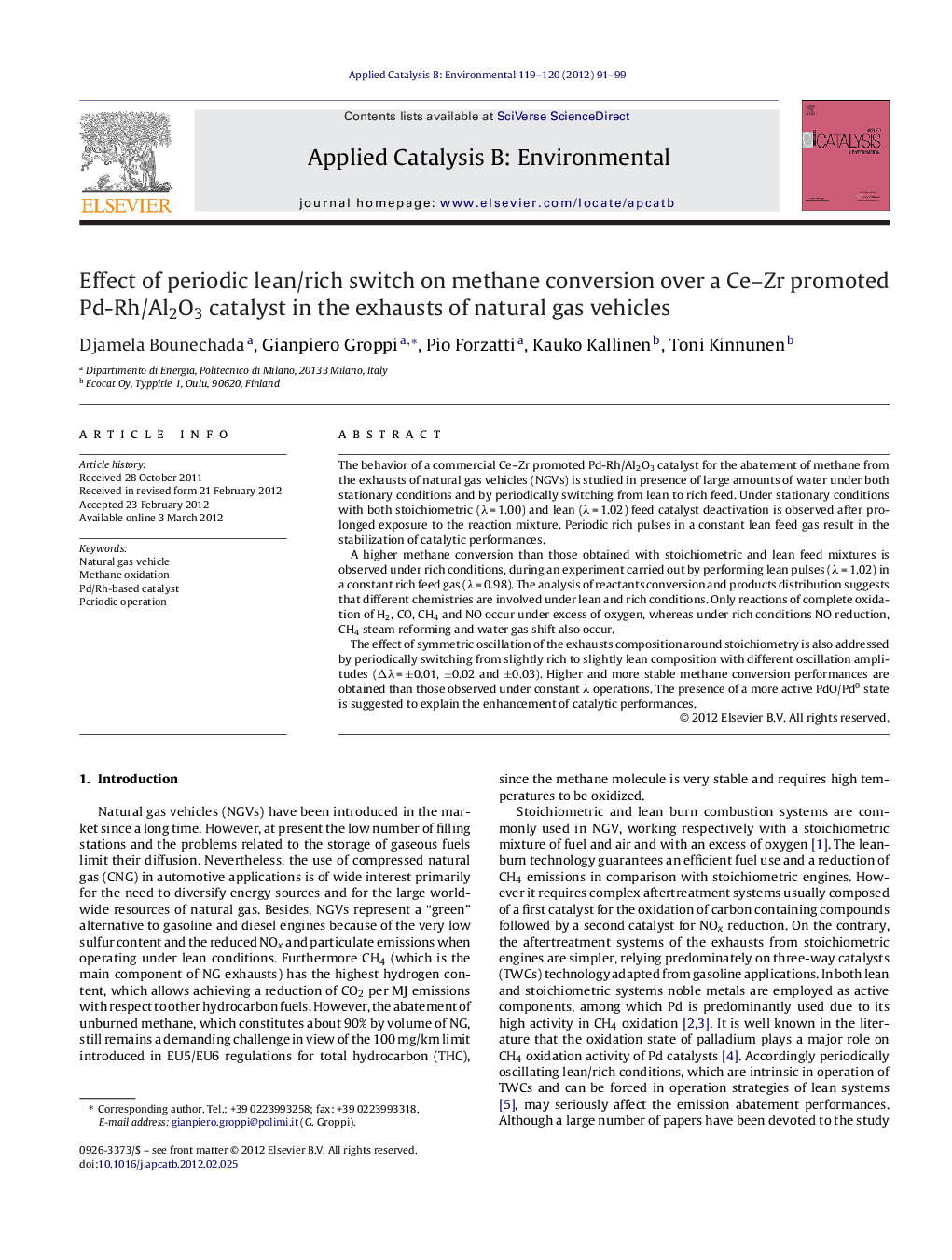| Article ID | Journal | Published Year | Pages | File Type |
|---|---|---|---|---|
| 46640 | Applied Catalysis B: Environmental | 2012 | 9 Pages |
The behavior of a commercial Ce–Zr promoted Pd-Rh/Al2O3 catalyst for the abatement of methane from the exhausts of natural gas vehicles (NGVs) is studied in presence of large amounts of water under both stationary conditions and by periodically switching from lean to rich feed. Under stationary conditions with both stoichiometric (λ = 1.00) and lean (λ = 1.02) feed catalyst deactivation is observed after prolonged exposure to the reaction mixture. Periodic rich pulses in a constant lean feed gas result in the stabilization of catalytic performances.A higher methane conversion than those obtained with stoichiometric and lean feed mixtures is observed under rich conditions, during an experiment carried out by performing lean pulses (λ = 1.02) in a constant rich feed gas (λ = 0.98). The analysis of reactants conversion and products distribution suggests that different chemistries are involved under lean and rich conditions. Only reactions of complete oxidation of H2, CO, CH4 and NO occur under excess of oxygen, whereas under rich conditions NO reduction, CH4 steam reforming and water gas shift also occur.The effect of symmetric oscillation of the exhausts composition around stoichiometry is also addressed by periodically switching from slightly rich to slightly lean composition with different oscillation amplitudes (Δλ = ±0.01, ±0.02 and ±0.03). Higher and more stable methane conversion performances are obtained than those observed under constant λ operations. The presence of a more active PdO/Pd0 state is suggested to explain the enhancement of catalytic performances.
Graphical abstractFigure optionsDownload full-size imageDownload as PowerPoint slideHighlights► Rich pulses in a constant lean feed gas stabilize catalytic performances. ► Symmetric oscillations around λ = 1.00 stabilize and enhance catalytic performances. ► Higher CH4 conversions are obtained under rich than under lean conditions. ► The presence of O2 in the rich phase plays a key role in CH4 conversion enhancement. ► The activity enhancement is likely ascribable to a more active mixed PdO/Pd0 state.
